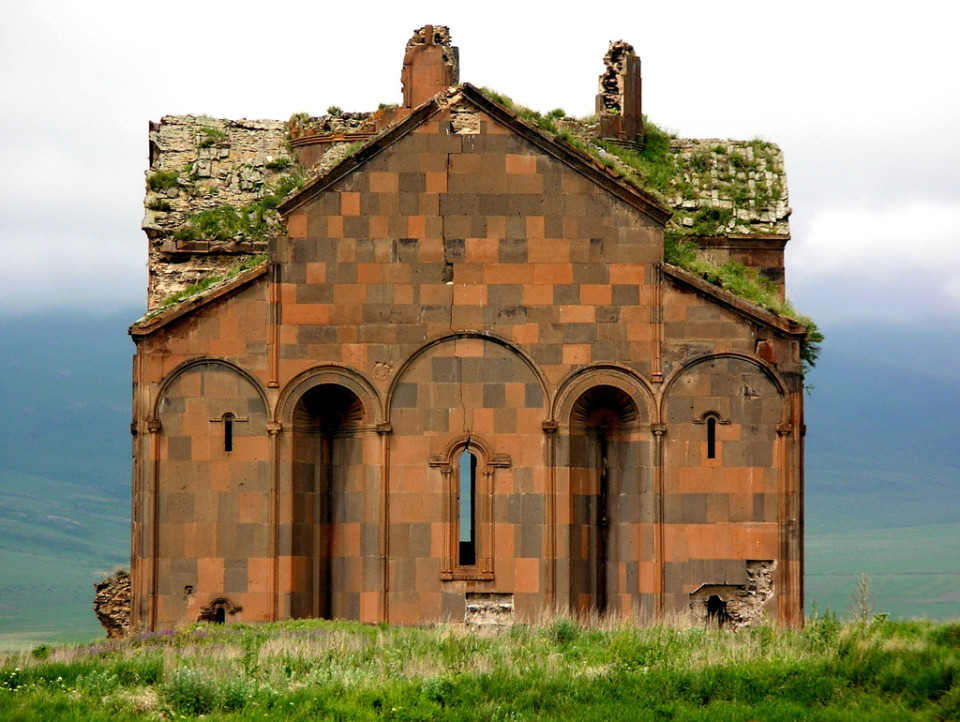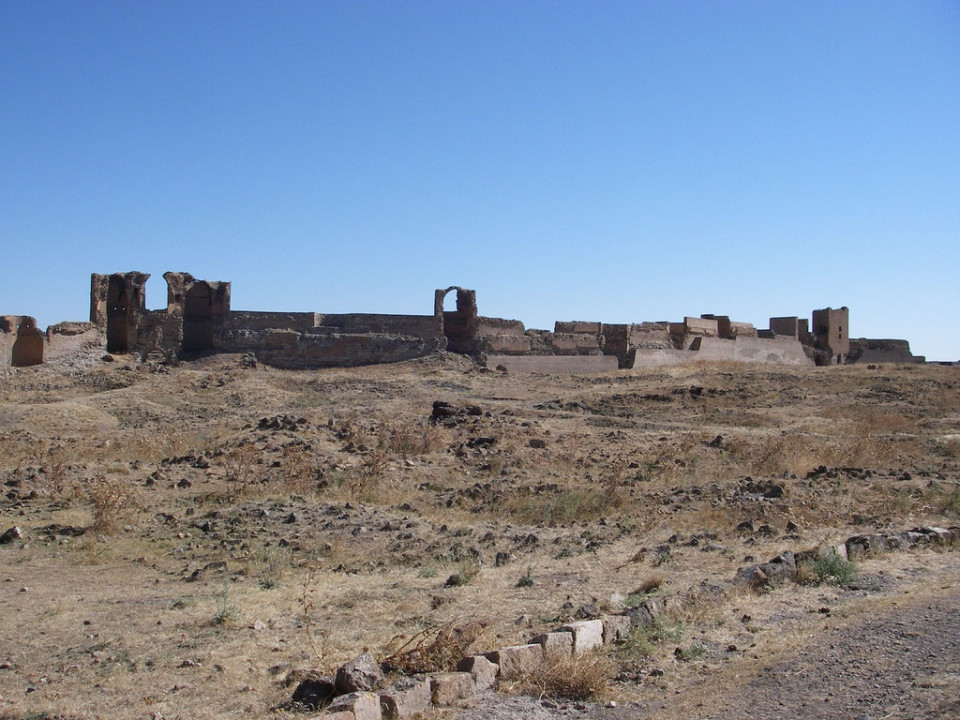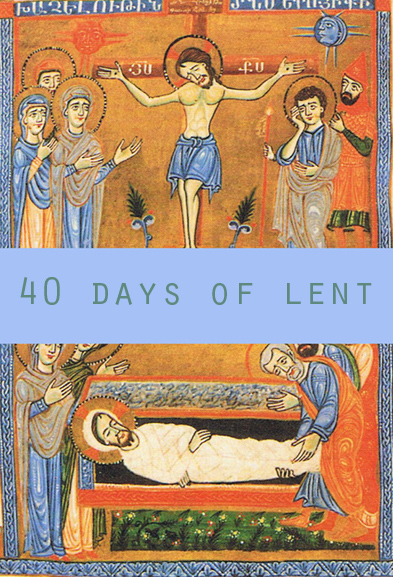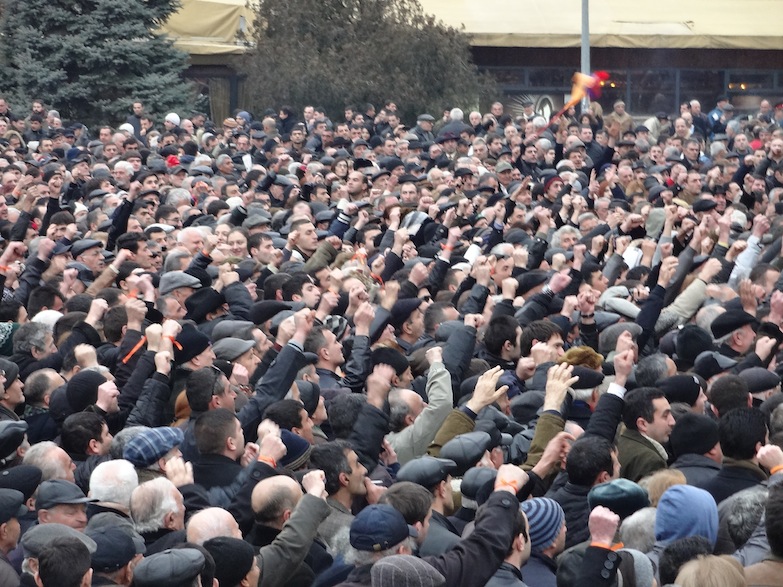Op-Ed: Turkish-Armenian Reconciliation in the Backdrop of Ani and Ararat

By Aram Sevanian
As we approach the centenary of the Armenian genocide in April 2015, will governments, especially in Ankara, be up to the job? Will there be a government, which will dare to deviate from deeply-rooted State policy?
At a time when Twitter and YouTube are blocked in Turkey, and Gezi commemoration demonstrations are repressed, and Russia reasserts its imperial power, it is highly doubtful.
At a time when a new, clever and insincere communications strategy on the part of the Turkish authorities regarding the denial of the Armenian Genocide, the prospects for a fair, sincere and sustainable reconciliation between Turks and Armenians is further than ever.
Yet let us dream of justice a little.
I was recently in Eastern Turkey, which many Armenians still call Western Armenia, in order to visit Armenian sites like the Akthamar Island and church or Ani, the Armenian capital of the 10th century. As we were making our way into Ani, the quasi-official guide to this ancient city on the Silk Road asserted to our little group of tourists, among other inaccuracies, that the Turkish-Armenian border was closed because Russia stationed nuclear weapons in Armenia.
A closed border by Turkey:
In fact, Turkey has closed the border unilaterally almost since the independence of Armenia on the pretext of the war in Nagorno-Karabakh between Armenia and Azerbaijan. Ani or Ararat are therefore inaccessible from the territory of the Republic of Armenia. In the immediate neighborhood of Europe, such a situation may appear as grossly unfair: an entire nation and tourists who visit this country, Armenia, are cut off from an Armenian heritage, or predominantly Armenian, located on the other side of the border by what is left of the Iron Curtain: If the USSR indeed disappeared, the Turkish-Armenian border remains sealed. The “remains of the sword,” as the survivors of the Armenian genocide are sometimes called in Turkey, are cut off from the remnants of their heritage.
The word “Armenian” banned on the Turkish side of the Border:
On the Turkish side of the border, the word «Armenian» is banned from official touristic literature. The kings or merchants who had churches or cathedrals built were either “rich,” “medieval,” or even “Bagratid,” but never “Armenian.” In this context, finding the birth house of Yeghishe Charents, one of Armenia’s greatest poets, who was born in Kars in 1897, is nearly impossible.
In planning my trip to this part of the world, I had to choose between visiting my Kurdish and Turkish friends on the one hand, and my Armenian friends on the other hand. Between visiting Istanbul or Yerevan. I did not want to have to choose. Yerevan is barely an hour away of Ararat by road. If the border was open, I could have also gone to Yerevan, or start my trip there, meet my Armenian friends, drink a glass of wine, and laugh with them, sharing my infinite joy of having been able to see Ararat so clearly. For when I was there, I was fortunate enough to see it so distinctly. There was not a single cloud the day I visited it. Ararat was there entirely visible in all its majesty. I was speechless. Amazed. I took countless pictures. I visited the Armenian Republic several times and I had never seen Ararat so clearly. Even the guide I was with, who sees Ararat quite often, had several pictures of him taken for, even to him, the scene was spectacular.
Visiting Ani was also a blessing. I had the entire site almost to myself for three hours. For an adult like me, it was as good as having Disneyland to myself if I had been 10 years-old. The site was icy and snowy. The sun was shining. The air was very cold. But I was so excited to be there that I did not feel the cold. I wandered around, went up and down the site, visited every remaining church and ruin there was to visit with the eagerness of that 10 year-old kid at Disneyland. Not a single time did I read the word “Armenian”, but it did not matter a second when I was there. I was well into my visit, like hypnotized. I had to see every piece, every stone there was to see and take a picture of them. The light was sublime that day. May be a little too bright at times. Armenia was there, on the other side of the canyon. On the wrong side of history. I extended my love to Armenia once or twice. “Sirum em kez, Hayasdan.” “I love you, Armenia.” I loved all the churches that I saw (Tigran Honents, etc.). But my favorite may very well have been the Cathedral (981). A roof half gone. A floor covered in snow and ice. Rays of lights coming in. A building out of time so sublime that visiting Notre Dame or Saint Peter’s would be boring in comparison.
What a shame Ani is currently a dead-end, when it could be the very heart of reconciliation between Turks and Armenians.

The sun setting over Yerevan, Armenia and Mount Ararat in Turkey/Flickr Creative Commons/Forbes Johnston
A genuine and sincere process: The need to really recognize the Armenian Genocide and to establish a Turkish-Armenian reparations committee:
Then of course, there is an urgent need to open this border and to recognize the Armenian Genocide at government level. But this would only be first steps. A normal situation (an open border) can in no case seal a just, balanced and long-lasting reconciliation. Reconciliation should not only rest on the respect of international law and immediate economic gains – what an open border would actually mean-, but also on a fair acknowledgement of the past.
Domestically, the initiation of some sort of Truth and Reconciliation Committee by the Turkish authorities, based on the South African model, may be one of the measures, which would help Turkey in that regard.
In 2003, an independent Turkish-Armenian commission, created under the auspices of the US State Department, had already concluded that the “events of 1915” constituted genocide. But the Turkish authorities have thus far chosen to ignore this fact. So internationally, more than a joint historical commission to study the “events of 1915” which the Turkish authorities are still calling for as part of the latest communications strategy, the establishment of a joint Turkish – Armenian committee for reparations is very much needed and would be part of the same genuine and sincere recognition process.
Beyond symbolic gestures like a visit to Tsitsernakaberd, the Armenian genocide memorial in Yerevan, by the Head of Government or Turkish State, reconciliation between the two countries will necessitate strong and concrete gestures of both sides, particularly in territorial terms. The joint Turkish – Armenian reparations committee would be in charge of deciding such measures. This article focuses on two of them in that they are highly symbolic and would therefore embody a genuine, fair and sustainable reconciliation process, millions of miles away from the PR stratagem that we have seen at play between Turkish Prime Minister Tayyip Erdoğan’s declaration and Turkish Foreign Minister Ahmet Davutoglu’s op-ed piece in The Guardian this year.

Ani’s city walls/Flickr Creative Commons/Jean and Nathalie
The idea: A formal and definitive recognition of the borders of 1921 (i.e. abandoning Armenian irredentism) in exchange for a condominium on Ani and Ararat:
Territorially, in exchange for a formal recognition of the borders from the 1921 Treaty of Kars by Armenia, Turkey would propose a condominium on Ani and Ararat to Armenia, which Armenia would accept.
Formal recognition of the Treaty of Kars by Armenia would mean, for the latter and its diaspora, formally accepting the permanent loss of “Western Armenia”. The latter is the location, among others, of Lake Van, its Holy Cross Church of the 10th century (the Turkish government recently renovated it. Hundreds of other churches and monasteries, including Akhtamar’s, were however previously destroyed), or cities like Kars, where the novel Snow by Orhan Pamuk takes place, but also home to a 10th century Armenian Cathedral (the “Church of the Apostles”) and birth place of the great Armenian poet Yeghiche Charents. This Armenia – also referred to as “historic”-, was the historic place of settlement of the Armenians who lived, thrived, and built there long before the arrival on the land of the Seljuk Turks. It is a native or near-native people who have been ripped forever from this land. Formally renouncing this land would of course mean accepting the reality of things: hundreds of thousands of men and women currently live on the land. It is de facto their home. But at the symbolic level, nobody could deny that it would be a fundamental act on Armenia’s part. This would be a clear and definitive abandonment of Armenia’s irredentist goals. President Woodrow Wilson’s arbitration would no longer be on the table for instance. The Preamble of the Constitution of the Republic of Armenia (Armenia’s declaration of independence), which makes a clear reference to Western Armenia, would also need to be amended.
What are we talking about? Non-populated areas on the border and with strong, symbolic and emotional value:
Ani is the ancient Armenian capital of the year 1000, located on the border between the two states. Today it is in ruins and covers an area of barely a few km2. The condominium, the terms of which would need to be defined (would administration alternate every 6 months as in the Isle of Pheasants on the Franco-Spanish border or would it be a joint administration as was the case with the New Hebrides (Vanuatu) between France and the UK?) would therefore only cover a very small area of only a few km2, but one with very strong and symbolic significance. Ani is also the place where the Seljuk Turks built the first Turkish mosque in Anatolia in 1072.
Further south, Ararat, the mythical mountain on which Noah’s Ark would have ended its course, is also located on the border between the two countries. Who already visited Armenia knows the importance of Ararat, even in the smallest details of life, and the centrality of this mountain in the Armenian psyche. The area where the Ararat is is a larger region, somewhat populated, so that the condominium strictly speaking would cover, if both parties agreed, the mountain itself only (the small and large Ararat) and not the border area consisting of Ararat as one finds there a few municipalities and the road linking Turkey and Nachichevan, the exclave of Azerbaijan. Maybe a road to Ararat could be built from Armenia. It could be called the “peace road”. This “peace road”, included in the condominium, would ensure continuity. The condominium would cover an unpopulated territory and would therefore not be problematic in practice. Although condominiums covering populated areas did exist, it is clear that those condominiums (on non-populated areas) are less problematic in practice because we are not talking about joint administration of men and women, but joint administration of a simple geography.
For Turkey, this solution would not entail to abandon its sovereignty over these two unpopulated places, but simply to share it with a diminished neighbor. It would be all the more easy that these two locations, let us insist, are not inhabited, like the isle of pheasants between France and Spain. Examples of condominium indeed exist around the world. It is by no means a novelty. With this difference that in this case the symbolic load is so heavy that this project, if implemented, would significantly contribute to a fair and lasting reconciliation between the two countries and for future generations.
A balanced, easy to implement and with beneficial effects solution
By stretching an arm to Armenia, Turkey, which will preside the G20 in 2015, would finally give substance to its policy of zero problems with its neighbors, in this case for Armenia. Armenia would thus be given incentive to plan for the future. Nostalgia would no longer be at the heart of the Armenian soul insofar as Armenia and Armenians would finally have access to the very heart of what makes their identity. Moreover, it should be noted that with this solution, the borders of Turkey would not budge an inch.
In the end, what is it we are talking about? A solution, which certainly demands courage, or a Copernician revolution in the mindset of the Turkish State, but at the same time, a forward-looking, modern, fair, balanced, and easy to implement solution, which would help to reconcile these two peoples sustainably by clearing, in a serious and sincere manner, the legacy of the 1915 genocide. The joint Turkish – Armenian committee for reparations should decide this measure and other relevant measures.
Aram Sevanian’s name has been changed as the author wishes to remain anonymous





